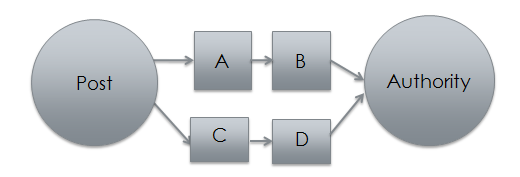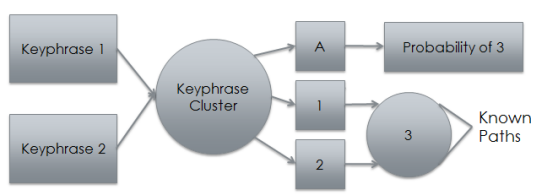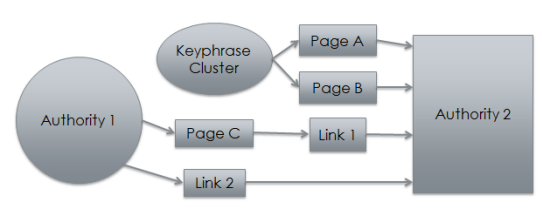How Markov Chains Can Change SEO
February 19, 2014SEOs have long been the gatekeepers of data, especially when in-house. To prove success in search engine optimization, you need numbers. For valuable numbers, you need metrics (and tools). Then data points started to disappear.
iOS first confused organic search data with referral data. Chrome then stopped reporting keyword activity for users who were signed in. Then (not provided) grew to 100% – and SEOs used to keywords as the pivotal data point were stuck.
Enter Markov Chains, stage left. Discovered by a statistician named Andrey Markov, the appropriately named Markov Chains say that missing data points don’t matter in web prediction. This means a few things.
Primary Contributions of Markov Chains to SEO:
- SEOs can use Markov Chains to predict what content users will want to see, and specifically what content their users or their competitors’ users will want to see. This is like if Google Keyword Planner and ComScore get together and decide to go granular AND keep your data private.
- (Not provided) doesn’t matter.
- SEOs can bring more value to user experience, social media, branding teams, and more.
Here’s How Markov Chains Work:
In a typical probability function, the probability of what you’ll do third is based on the first two things you did. When a Markov chain is applied, the probability of what you’ll do third is based only on what you did second, not on what you did first.
In every case, Markov chains use co-domains, the common denominator between user paths. However, in Relational Markov Models, you can string together two functions with different co-domains or different types, as long as there is one over-arching similarity between all of the states (which is usually the reason why you’re modeling them).
Applications:
Markov Models let you do any number of cool things:
- Full user pathing: Shift the co-domain from a search keyword to the page on your site that you are analyzing, or the behavior. Then build two functions. The first describes what happens before users get there (as the co-domain here might be a demographic data point, not the landing page), a very useful function for branding teams. The second describes what happens when users get to the page. Then, using the landing page as the main co-domain, plug in the resulting probability values into a new function.
- User behavior: The second equation of the first half of the example above, e.g., the function that describes what happens after the user arrives at the site.
- Social network modeling: The co-domain is a post that the users all see. The state you’re identifying is the authority, which can then be used as another function’s co-domain.
… and more (multi-channel attribution, anyone?). Markov Chains are also generative, which means that you can automate them, combine chains, and let them build on each other (as in example 3).
It should be noted that Google may already be using Markov Chains in four ways:
- HTTP service request prediction: Google prefetches a page given the probability that the user will want to see it. This speeds up search engine response time.
- Keyphrase cluster identification: Keyphrases can be identified as belonging to a cluster, a la Hummingbird. This is the same function as the one in full user pathing that identifies relevant demographics.
- Agent suggestion: The engine auto-suggests searches and links that the user is likely to want to access.
- Scoring: Markov chains can also be used to identify hubs of authority that are probable next steps in systems with individual (sub-)co-domains. This is the same function as the one in social network modeling.
To obtain formal definitions (and for the mathematical process behind these applications of Markov Chains), follow this link. Keep adding value to your SEO team, and stay tuned to the Catalyst blog for more innovative approaches to digital marketing.










